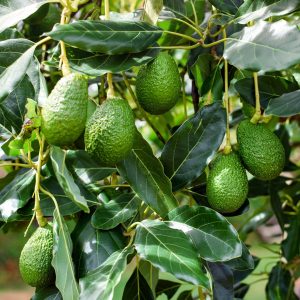Avocado

Healthy, nutritious and with numerous beneficial properties. Avocado is a portentous fruit, considered a real superfood thanks to its rich content of nutrients and good fats.
Only recently has it been possible to find it easily in supermarkets and on Italian tables. Although it is a tropical fruit native to South America, in fact, the Mediterranean climate (in particular of Sicily and Sardinia) allows it to be cultivated locally.
Also in Italy, therefore, a real avocado craze seems to have exploded.
So let’s see what are the properties and benefits of avocado, its nutritional values and the calories provided by each fruit. In addition, let’s find out more about how avocado is eaten and the best recipes to enjoy it at its best.
GROUND
The soil must be light, loose, fertile, fresh and with a neutral pH. It does not adapt to heavy, clayey, undrained or acidic soils. It is a plant that needs space (at least 5 x 5 m). The location must be sheltered from the wind and sunny.
It needs continuous irrigation throughout the summer: the soil must always remain slightly moist, although well drained (without stagnation). It is advisable to keep the ground grass (there is no competition between the powerful root system of avocado and weeds).
Fertilization is carried out from March to November with a citrus fruit product.
FLOWERS AND FRUITS
Avocado is an arboreal Lauracea of 10-15 m, with compact crown and very branched and deep root system.
The rounded crown is given by lanceolate, oval, shiny, rigid, almost waxy, dark green leaves. The plant is evergreen, but, before flowering, in some varieties it may lose its leaves to put them back after the fruit set.
The flowers, very small, insignificant, are carried by very dense racemes, at the apex of the branches. They are produced from April to August.
The fruits are large pear-like drupes, with dark green or purple-purplish-brown skin, smooth or wrinkled, with only one large seed inside. The pulp, abundant, is buttery, rich in polyunsaturated (beneficial) fats, cream or slightly greenish in color. The ripening of the fruit takes place over several months (even 6, so the harvest begins in November and continues until March depending on the variety) directly on the branches of the plant; alternatively, they can be collected and placed in a box together with some apples (but the flavor will be less tasty than when ripening on the plant): the avocado is ripe when the pulp is slightly yielding to the pressure of the fingers.
It is a rather long-lived plant, but with a rapid growth: even 1 m in 2-3 years. Potted in an apartment it can live up to 10 years before becoming too bulky.
USE AND HEALTHCARE CONTENT
Avocado is an arboreal Lauracea of 10-15 m, with compact crown and very branched and deep root system.
The rounded crown is given by lanceolate, oval, shiny, rigid, almost waxy, dark green leaves. The plant is evergreen, but, before flowering, in some varieties it may lose its leaves to put them back after the fruit set.
The flowers, very small, insignificant, are carried by very dense racemes, at the apex of the branches. They are produced from April to August.
The fruits are large pear-like drupes, with dark green or purple-purplish-brown skin, smooth or wrinkled, with only one large seed inside. The pulp, abundant, is buttery, rich in polyunsaturated (beneficial) fats, cream or slightly greenish in color. The ripening of the fruit takes place over several months (even 6, so the harvest begins in November and continues until March depending on the variety) directly on the branches of the plant; alternatively, they can be collected and placed in a box together with some apples (but the flavor will be less tasty than when ripening on the plant): the avocado is ripe when the pulp is slightly yielding to the pressure of the fingers.
It is a rather long-lived plant, but with a rapid growth: even 1 m in 2-3 years. Potted in an apartment it can live up to 10 years before becoming too bulky.
PRUNING AND CULTURAL CARE
Pruning should be done in the first years (training pruning) in spring, to obtain 2-3 branches for each stage. Afterwards it is preferable not to touch the tree anymore, if not to thin out the vegetation: the avocado struggles to heal the cuts.
The only adversity is downy mildew (Phytophthora cinnamomi), which affects the collar and then the roots of plants placed on ground with water stagnation and / or excessively fertilized with nitrogen.
